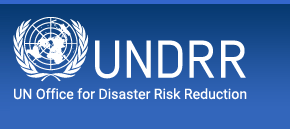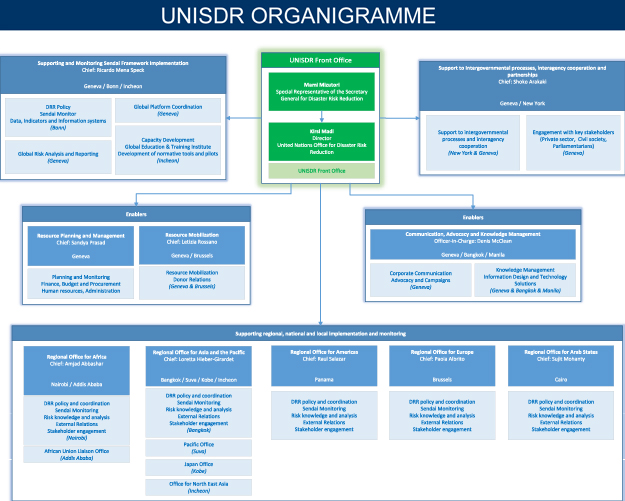- Our Mandate
- Mission and Objectives
- UNDRR in the UN
- Work Programme & Annual Reports
- Results Based System
- Work Partnerships
- Headquarters - Geneva
- SG-UN representatives for DRR
- Regional Office – The Americas and the Caribbean
- Head of the Regional Office – The Americas and the Caribbean
- What is Disaster Risk Reduction?
- What is the International Strategy?
- History of UNDRR
Our Mandate
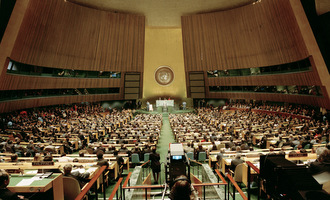
The Office for Disaster Risk Reduction
UNDRR’s mandate has been defined by a number of United Nations General Assembly Resolutions, the most notable of which is “to serve as the focal point in the United Nations system for the coordination of disaster reduction and to ensure synergies among the disaster reduction activities of the United Nations system and regional organizations and activities in socio-economic and humanitarian fields” (UN General Assembly Resolution 56/195).
UNDRR is part of the United Nations Secretariat.
The UN General Assembly adopted the International Strategy for Disaster Reduction in December 1999 and established UNDRR, the secretariat to ensure its implementation. Its mandate was expanded in 2001 to serve as the focal point in the United Nations system to ensure coordination and synergies among disaster risk reduction activities of the United Nations system and regional organizations and activities in socio-economic and humanitarian fields (GA resolution 56/195).
As the UN office for disaster risk reduction, UNDRR supports the implementation, follow-up and review of the Sendai Framework for Disaster Risk Reduction 2015-2030 (Sendai Framework) adopted by the Third UN World Conference on Disaster Risk Reduction on 18 March 2015 in Sendai, Japan. The Sendai Framework is a 15-year voluntary, non-binding agreement that maps out a broad, people-centred approach to disaster risk reduction, succeeding the Hyogo Framework for Action.
UNDRR is led by the United Nations Special Representative of the Secretary-General for Disaster Risk Reduction (SRSG/ASG), UNDRR has over 100 staff located in its headquarters in Geneva, Switzerland, and 5 regional offices and other field presences.
UNDRR's core functions span the development and humanitarian fields.
Its core areas of work includes ensuring disaster risk reduction (DRR) is applied to climate change adaptation, increasing investments for DRR, building disaster-resilient cities, schools and hospitals, and strengthening the international system for DRR.
UNDRR’s vision is anchored on the four priorities for action set out in the Sendai Framework: understanding disaster risk, strengthening disaster risk governance to manage disaster risk, Investing in disaster risk reduction for resilience, and enhancing disaster preparedness for effective response and to “Build Back Better” in recovery, rehabilitation and reconstruction.
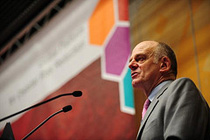 The Global Platform for Disaster Risk Reduction, led by UNDRR, meets every two years.
The Global Platform for Disaster Risk Reduction, led by UNDRR, meets every two years.UNDRR leads the preparation and follow-up of the Global Platform for Disaster Risk Reduction established in 2006 (GA resolution 61/198). The Global Platform has become the main global forum for disaster risk reduction and for the provision of strategic and coherent guidance for the implementation of the Sendai Framework and to share experience among stakeholders. Other areas of work for UNDRR includes issuing the Global Assessment Report on Disaster Risk Reduction every two years, supporting countries in monitoring risk trends and the implementation of the Sendai Framework, and leading global campaigns on disaster risk reduction for safer schools, safer hospitals and safer cities.
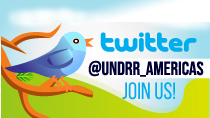 Now we have twitter account @UNDRR Américas y el Caribe
Now we have twitter account @UNDRR Américas y el Caribe
JOIN US!
